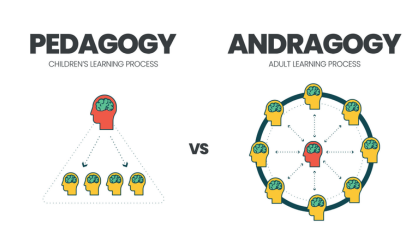Training programs are a crucial part of any organization's growth and success.
However, how do organizations know if their training programs are effective and if they're providing a return on investment?
This is where training analytics come in.
Training analytics involves using data to measure the effectiveness of training programs.
By collecting and analyzing data on training outcomes such as employee performance, engagement, and retention rates, organizations can determine whether their training programs are meeting their objectives and identify areas for improvement.
This information can also be used to demonstrate the value of training programs to stakeholders and justify investments in future training initiatives.
In this article, we will explore the importance of training analytics and provide practical tips for measuring the effectiveness of your training programs.
What Is Training Analytics?

Training analytics refers to the practice of using data and metrics to measure the effectiveness of training programs.
This involves collecting and analyzing data related to training outcomes, such as employee performance, knowledge retention, skills development, and engagement, to determine the success of the training initiative.
It can help organizations identify gaps in their training programs, assess the impact of training on employee performance and organizational goals, and make data-driven decisions to improve future training initiatives.
By evaluating training outcomes and using this information to optimize training programs, organizations can maximize their return on investment (ROI) in employee development and training.
To conduct training analytics, organizations need to define clear and measurable training objectives, identify relevant metrics to track and establish a data collection and analysis process.
This may involve using tools such as learning management systems (LMS) and surveys to gather data on training outcomes, as well as data analytics and visualization software to analyze and present the data in a meaningful way.
Overall, it is a critical practice for organizations to ensure that their training programs are effective, impactful, and aligned with organizational goals.
Importance Of LMS Analytics

Learning Management Systems analytics are important because they provide valuable insights into the effectiveness of training programs.
LMS analytics can help organizations measure learning outcomes, identify knowledge gaps, track learner progress, and evaluate the overall impact of training initiatives.
Here are some of the key benefits of LMS analytics:
1. Measure Learning Outcomes
They can help organizations measure the effectiveness of their training programs by tracking learner progress and evaluating learning outcomes.
This information can be used to identify areas where learners are struggling and make adjustments to the training program accordingly.
2. Identify Knowledge Gaps
They can also help organizations identify knowledge gaps among learners.
This information can be used to develop targeted training programs to address these gaps and improve the overall effectiveness of training.
3. Improve Learner Engagement
They can provide insights into learner engagement and participation, helping organizations to identify areas where learners are disengaged or struggling.
This information can be used to improve learner engagement and motivation, leading to better learning outcomes.
4. Optimize Training Delivery
They can help organizations to optimize training delivery by identifying the most effective training methods, modules, and resources.
This can help organizations to deliver training more efficiently and effectively.
5. Demonstrate ROI
They can help organizations demonstrate the ROI of their training programs by providing data on the impact of training on key performance indicators such as employee retention, productivity, and job satisfaction.
In summary, these analytics are important for organizations to improve the effectiveness of their training programs, optimize training delivery, and demonstrate the ROI of training initiatives.
By leveraging these analytics, organizations can develop more targeted and effective training programs that lead to better learning outcomes and improved organizational performance.
The Art Of Innovative Training

Innovative training is crucial for organizations to keep up with the rapidly changing business landscape and the evolving needs of their employees.
Traditional training methods may not always be effective or engaging, leading to low participation and poor learning outcomes.
By incorporating innovative approaches, organizations can create more effective, engaging, and impactful training programs that drive better learning outcomes and improve organizational performance.
Here are some of the key benefits of innovative training:
1. Increased Engagement
These training approaches, such as gamification, interactive simulations, and virtual reality, can increase learner engagement and motivation, leading to better learning outcomes.
2. Personalization
It can be tailored to individual learner needs and preferences, allowing learners to progress at their own pace and focus on the areas where they need the most support.
3. Flexibility
It can be delivered in various formats, such as e-learning, micro-learning, and mobile learning, making them more accessible and convenient for learners.
4. Improved Retention
Methods, such as immersive simulations, can improve knowledge retention by creating memorable and impactful learning experiences.
5. Competitive Advantage
It can give organizations a competitive advantage by developing a skilled and knowledgeable workforce that can adapt to new challenges and drive organizational growth.
In summary, these training programs are essential for organizations to create effective, engaging, and impactful training programs that drive better learning outcomes and improve organizational performance.
By leveraging these approaches, organizations can create a culture of continuous learning that helps employees adapt to changing business needs and drive organizational success.
How To Set Objectives For Training Effectively?
Setting clear objectives for training programs is essential for ensuring that the training is effective and aligned with organizational goals.
Here are some tips for setting objectives effectively:
1. Align With Business Goals
The objectives should be aligned with the overall business goals and objectives of the organization.
This helps ensure that the training programs contribute to the success of the organization.
2. Be Specific And Measurable
The objectives should be specific, measurable, achievable, relevant, and time-bound (SMART).
This helps to ensure that the objectives are clear, attainable, and measurable so that progress can be tracked and evaluated.
3. Consider Learner Needs
The Objectives should take into account the needs of the learners.
This means identifying the knowledge, skills, and competencies that the learners need to develop to be successful in their roles.
4. Focus On Performance Improvement
The objectives should be focused on improving performance.
This means identifying specific performance outcomes that are expected as a result of the training program.
5. Involve Stakeholders
Involve stakeholders, such as managers, supervisors, and subject matter experts, in the objective-setting process.
This helps to ensure that the objectives are relevant and realistic.
6. Evaluate And Revise
Evaluate the effectiveness of the training program regularly and revise objectives as needed to ensure that they remain relevant and effective.
Overall, setting clear and specific objectives for training programs is essential for ensuring that the training is effective and aligned with organizational goals.
By following these tips, organizations can develop training programs that are focused on improving performance and driving organizational success.
Enhance Employee Training With Oreed
If you're searching for an all-in-one training platform to train your employees, look no further than Oreed.
Increased Employee Awareness
Oreed offers enhanced employee awareness, providing you with a comprehensive 360-degree view of your employees.
By leveraging this capability, you'll be better equipped to make evidence-based decisions considering the information at your disposal.
Development Of Training/Courses
With improved employee awareness through Oreed, you'll be able to gain a deeper understanding of your employees' training needs, allowing you to plan future training and courses more effectively.
Moreover, Oreed also offers tailor-made training and courses to meet your specific needs.
Measure The Impact Of The Training/Courses
Oreed also enables you to gauge the impact and effectiveness of your training/courses.
So what are you waiting for? Book a demo with Oreed today and find out more about our features.
Promote lifelong learning through Oreed by experiencing the most powerful all-in-one training and development intelligent platform that streamlines all your organization's learning, training, and development activities in one place.
Final Thoughts
Training analytics is essential for measuring the effectiveness of training programs and identifying areas for improvement.
By leveraging these analytics, organizations can gain insights into employee performance, identify skill gaps, and measure the impact of training programs on employee development and organizational performance.
An effective strategy should include setting clear objectives, selecting relevant metrics, collecting and analyzing data, and using the insights gained to make data-driven decisions.
The use of advanced technologies, such as learning management systems and data visualization tools, can also enhance the effectiveness of training analytics.
Overall, training analytics play a critical role in driving employee development and organizational performance.
By adopting a data-driven approach to training, organizations can create more effective, engaging, and impactful training programs that drive better learning outcomes and improve organizational success.
FAQs
1. What 3 methods can be used to evaluate training?
Several methods can be used to evaluate training programs. Here are three commonly used methods:
Kirkpatrick's Four-Level Model
This is a popular model for evaluating training that focuses on four levels: reaction, learning, behavior, and results.
It involves gathering feedback from participants about their reactions to the training, testing their knowledge and skills, observing changes in behavior, and measuring the impact of the training on business outcomes.
Surveys And Feedback Forms
This method involves gathering feedback from participants using surveys and feedback forms.
It can provide valuable insights into how participants perceived the training, what they learned, and how they plan to apply it to their work.
Performance Metrics
This method involves measuring changes in performance metrics, such as productivity, efficiency, and quality, before and after the training.
This can help to determine the impact of the training on business outcomes and identify areas for improvement.
Each of these methods has its strengths and weaknesses, and the best approach will depend on the specific goals of the training program and the resources available for evaluation.
2. What is effectiveness KPI?
Effectiveness KPI stands for Key Performance Indicator, which is a measurable value that helps an organization to track progress towards achieving its goals.
An effectiveness KPI measures how well a particular process or activity is achieving its intended outcomes.
In the context of training, it might measure the impact of a training program on employee performance or business outcomes.
For example, an organization might track the number of new skills employees have learned as a result of the training, or how the training has improved customer satisfaction ratings or increased sales revenue.





